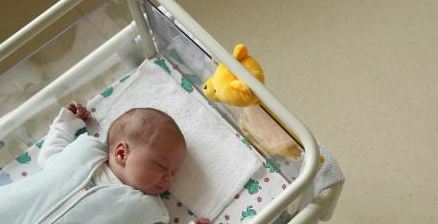Twenty-somethings who postponed having babies because of the poor economy are still hesitant to jump in to parenthood — an unexpected consequence that has dropped theUSA’s birthrate to its lowest point in 25 years.
By Haya El Nasser, USA TODAY
The fertility rate is not expected to rebound for at least two years and could affect birthrates for years to come, according to Demographic Intelligence, a Charlottesville, Va., company that produces quarterly birth forecasts for consumer products and pharmaceutical giants such as Pfizer and Procter & Gamble.
Marketers track fertility trends closely because they affect sales of thousands of products from diapers, cribs and minivans to baby bottles, toys and children’s pain relievers.
As the economy tanked, the average number of births per woman fell 12% from a peak of 2.12 in 2007. Demographic Intelligence projects the rate to hit 1.87 this year and 1.86 next year — the lowest since 1987.
The less-educated and Hispanics have experienced the biggest birthrate decline while the share of U.S. births to college-educated, non-Hispanic whites and Asian Americans has grown.
“What that tells you is that births have clearly been affected by the economy,” says Sam Sturgeon, president of Demographic Intelligence. “And like any recession, it doesn’t hit all people equally, and it hit some people much harder than others.”
The effect of this economic slump on birthrates has been more rapid and long-lasting than any downturn since the Great Depression.
“Usually consumer sentiment bounces back a little quicker,” Sturgeon says. “People are a bit in a wait-and-see pattern. … There’s a sense of hesitancy, of ’What does better look like? How will we know?’ — especially for those of prime child-bearing age. … The key word would be uncertainty, a lot of uncertainty. ”
Many young adults are unemployed, carrying big student loan debt and often forced to move back in with their parents — factors that may make them think twice about starting a family.
“The more you delay it, the more you delay the possibility of a second or third child,” says Stephanie Coontz, director of research and public education at the Council on Contemporary Families. “This is probably a long-term trend that is exacerbated by the recession but also by the general hollowing out of middle-class jobs. There’s a growing sense that college is prohibitively expensive, and yet your kids can’t make it without a college degree,” so many women may decide to have just one child. “We have to think through our policies,” she says. “We’ve got to provide better support systems for working mothers as well as fathers.”
The U.S. fertility rate has been the envy of the developed world because it has remained close to the replacement rate of 2.1 (the number of children each woman must have to maintain current population) for more than 20 years.
Asian and European countries, where fertility rates are as low as 1.1 (Taiwan) and 1.3 (Portugal), are worried about their populations aging and not having enough young workers to support them.
Immigration has helped the USA maintain higher birthrates, but that segment has been hard hit by this downturn. The birthrate for Hispanics tumbled from 3 in 2007 to less than 2.4 in 2010, the latest official government statistics.
Hispanic immigration has slowed, and studies show some immigrants have returned home.
“That’s going to have an effect,” says Carl Haub, demographer at the Population Reference Bureau. “Their overall proportions of births are enormous — roughly 25% of the U.S. total.”
See online: Americans put off having babies amid poor economy

